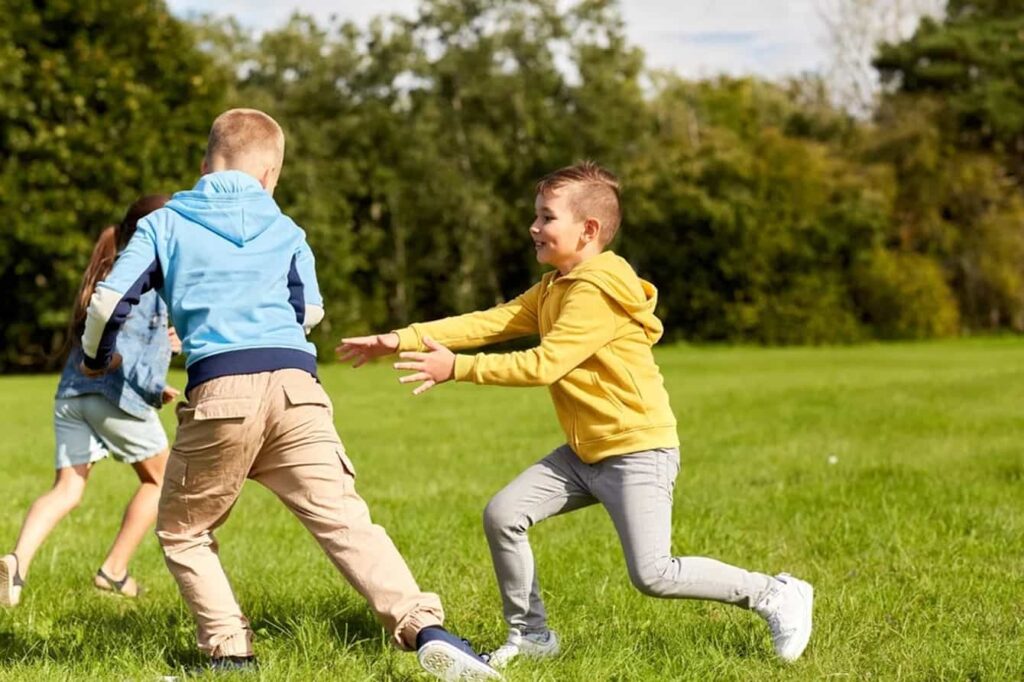Tag game have been a staple of childhood play for generations, offering a simple yet exhilarating way to have fun, stay active, and build social connections. Whether in a schoolyard, a park, or a backyard, tag game are versatile, requiring minimal equipment and a boundless imagination. This article will explore the rich history of tag game, the various types and their rules, and the myriad benefits they offer for physical, mental, and social well-being.
The History of Tag Game
The origins of tag game are as old as human civilization itself. Ancient cultures worldwide have versions of these chase-and-capture games, each with unique twists reflecting their traditions and social norms. From the Roman Game of “Pueri,” where boys would chase each other like a modern tag, to the Japanese Game of “Oni Gokko,” which involves one child playing the role of the “Oni” or demon, the basic concept of tag transcends cultural boundaries.
Types of Tag Game
Tag game come in countless varieties, each with its rules and objectives. Here are some of the most popular and enduring types:
Classic Tag
Objective: One player is “it” and must chase and tag the other players. The tagged player then becomes “it.”
Rules: A few rules make it easy to start and play anywhere. The Game ends when players tire or decide to stop.
Freeze Tag
Objective: The player who is “it” must tag others, who then have to freeze in place. Other players can unfreeze them by tagging them.
Rules: The Game continues until everyone is frozen, or players can set a time limit or goal.
Shadow Tag
Objective: Instead of tagging the body, players aim to step into the shadows of other players.
Rules: This version is excellent for sunny days and teaches spatial awareness and quick thinking.
Blob Tag
Objective: When “it” tags someone, they join hands to form a “blob,” and the blob continues to tag others.
Rules: The blob grows with each tagged player, making the Game increasingly challenging and cooperative.
TV Tag
Objective: Players can avoid being tagged by sitting and naming a TV show. They can’t be tagged while naming one but must move again immediately after.
Rules: Players can’t repeat TV shows, adding a memory challenge to the Game.
Flashlight Tag
Objective: Played at dusk or nighttime, the ” it ” player uses a flashlight to spot and tag others.
Rules: Players must stay within a defined area and can be tagged by the flashlight beam.
Capture the Flag
Objective: Teams compete to capture the opposing team’s flag and bring it back to their base without being tagged.
Rules: Players tagged while in enemy territory are sent to a “jail” and must be freed by teammates.
Benefits of Tag Game

Tag game are more than just fun; they offer a host of benefits for players of all ages:
Physical Fitness
Tag game involve running, dodging, and quick movements, providing an excellent cardiovascular workout. They help improve agility, coordination, and overall physical endurance. Regular participation in such activities can help children develop a lifelong love for physical fitness.
Mental Agility
Tag game require quick thinking and strategic planning. Players must constantly assess their surroundings, make split-second decisions, and adapt to the movements of others. These cognitive challenges help improve reaction times and mental sharpness.
Social Skills
Tag game are inherently social activities. They encourage teamwork, communication, and cooperation. Players learn to follow rules, take turns, and resolve conflicts, all essential social skills. Moreover, the shared experience of playing tag fosters a sense of camaraderie and friendship.
Emotional Well-being
Playing tag can be a great way to relieve stress and boost mood. Physical activity triggers the release of endorphins, the body’s natural feel-good hormones. Additionally, the joy of play and the thrill of the chase can provide a significant emotional uplift.
Tips for Organizing Tag Game
Organizing a successful tag game involves a few simple steps:
Choose an Appropriate Location: Ensure the play area is safe, with no hazards like sharp objects or busy streets nearby.
Set Clear Boundaries: Define the play area clearly to prevent players from wandering too far and to keep the Game fair.
Establish Rules: Make sure all players understand the rules before starting. This includes defining what counts as a tag, how to unfreeze players (if applicable), and any boundaries or safe zones.
Promote Fair Play: Encourage good sportsmanship and respect among players. Emphasize the importance of playing fair and having fun over winning.
Adapt to the Players: Consider the age and physical abilities of the players. Adjust the Game’s difficulty and rules to ensure everyone can participate and enjoy.
Tag Game in Schools
Incorporating tag game into school recess or physical education programs can have numerous benefits:
Promotes Physical Activity: Tag game provide a fun way for children to stay active, helping combat sedentary lifestyles.
Enhances Social Interaction: Playing tag encourages children to interact with peers, build friendships, and develop social skills.
Supports Cognitive Development: Tag game’ strategic and fast-paced nature helps improve children’s cognitive functions.
Provides a Break from Academics: Physical play during recess gives children a much-needed mental break, helping them return to the classroom refreshed and ready to learn.
Tag Game for Adults
Tag game are not just for children. Adults can also enjoy and benefit from these activities. Here are a few ways adults can incorporate tag game into their routines:
Fitness Classes: Tag game can be an enjoyable addition to group fitness classes, providing a fun and interactive workout.
Team-building Activities: Tag game can serve as excellent icebreakers and team-building exercises in corporate settings. They help build trust, communication, and cooperation among team members.
Family Gatherings: Tag game can bring generations together, offering a fun way for families to bond and stay active.
Tag Game and Technology
In the digital age, tag game also have a place in the virtual world. Augmented reality (AR) and virtual reality (VR) technologies have introduced new dimensions to traditional tag game:
AR Tag: Players can see virtual elements and challenges overlaid in the real world using smartphones or AR glasses, adding new layers of excitement and strategy to the Game.
VR Tag: In virtual reality, players can immerse themselves in fantastical environments and scenarios, making tag game even more engaging and imaginative.
FAQs
Q1. What is a Tag Game?
Tag Game is a popular playground game where one player (the “It”) chases other players in an attempt to tag them, making them “It.”
Q2. How do you play Tag Game?
Choose an “It”: Select one player to be “It” through a random method (e.g., counting rhymes, drawing straws).
Start Running: “It” chases the other players.
Tagging: When “It” touches another player, that player becomes the new “It.”
Continue Playing: The new “It” then chases the others, and the Game continues.
Q3. What are the basic rules of Tag Game?
No Tag-Backs: The player who just became “It” cannot immediately tag back the person who tagged them.
Safety Zones: Establish areas where players cannot be tagged (e.g., a bench or tree).
Fair Play: No rough or aggressive behaviour; players should tag gently.
Q4. Can Tag Game be played indoors?
Yes, Tag Game can be adapted for indoor play with some modifications to ensure safety, such as providing enough space and removing obstacles that might cause injury.
Q5. Are there different versions of the Tag Game?
Yes, there are many variations, including:
Freeze Tag: Tagged players must freeze in place until another player unfreezes them by tagging.
Blob Tag: Tagged players join hands with “It” to form a “blob,” chasing others.
Shadow Tag: Players tag by stepping on others’ shadows instead of touching them.
Conclusion
Tag game are timeless activities that bring joy, fitness, and social connection to people of all ages. Their simplicity, versatility, and adaptability make them ideal for schools, families, and communities. Whether played in a backyard, a park, or even in the digital realm, tag game will continue to be a beloved part of play culture for generations.
By incorporating tag game into your routine, you can enjoy their many physical, mental, and social benefits. So gather some friends, set your boundaries, and get ready to run, laugh, and tag your way to fun and fitness.

